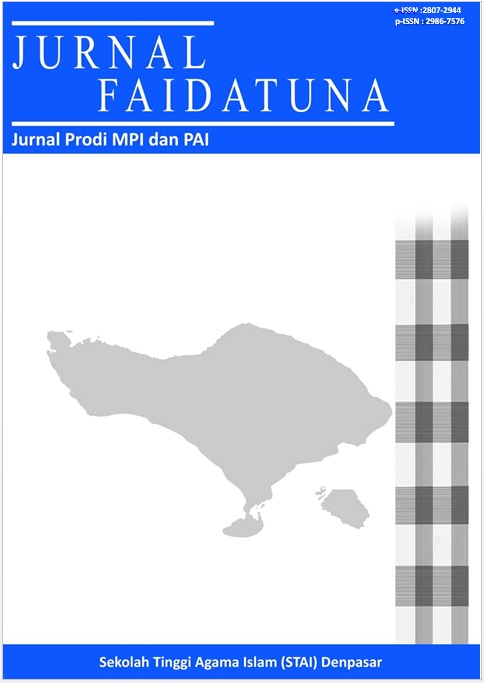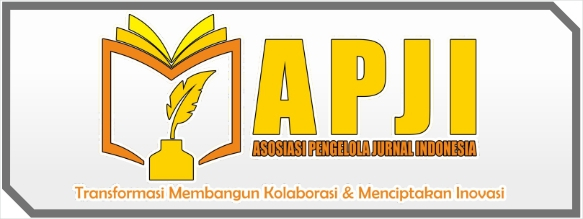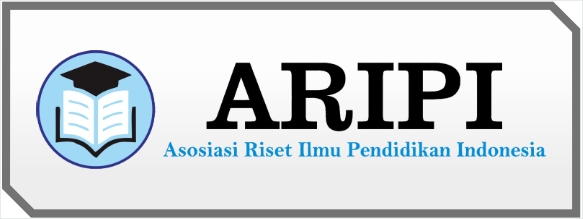Use of Tasybih Verses in Surah Ar-Rahman as Teaching Material for Mahara Kalam in Arabic Language Learning
DOI:
https://doi.org/10.53958/ft.v6i1.715Keywords:
Tasybih, Surah Ar-Rahman, Mahara Kalam, Teaching MaterialsAbstract
Most people like surah Ar-Rahman when it is chanted. In surah Ar-Rahman there are tasybih which add to the beauty of the verse, Tasybih beautifies sentences when speaking, praising, or seducing. According to researchers, the beauty of prayer beads can increase a person's enthusiasm for learning Arabic, Because one of the reasons people don't want to learn Arabic is a lack of motivation. Using tasybih in Surah Ar-Rahman we can beautify our conversations in Arabic. The aim of this research is. Analyze the verses containing tasybih in Surah Ar-Rahman and their meaning. Analyze the various types of tasybih contained in Surah Ar-Rahman and their meanings. This type of research is library research, The data collection technique in this research is Documentation Technique, Data analysis : The researcher reads surah Ar-Rahman then collects verses containing tasybih and their types then prepares teaching materials from the tasybih. The results of the research found 4 verses containing tasybih, namely in verse.14,24,37,58. And 5 5 types of prayer beads, tasybih mufrad bil mufrad, tasybih, mufrad bil murakkab, mujmal, mursal dan muakkad. The connection between the tasybih verses in Surah Ar-Rahman and the mahara kalam is a semantic aspect. Because the tasybih in Surah Ar-Rahman can expand our knowledge about the meaning of sentences. Tasybih verses are interesting teaching materials to help students express their thoughts and feelings in Arabic.
References
Chomsin, S. W., & Jasmadi. (2007) Panduan menyusun bahan ajar berbasis kompetensi. Elex Media Komputindo.
Harjanto. (2008). Perencanaan Pengajaran. Rineka Cipta.
Indrawan, R., & Yaniawati, R. P. (2014). Metodologi Penelitian.
Lestari, I. (2013). Pengembangan Bahan Ajar Berbasis Kompetensi. Akademia.
Nisa, L. C. (2007). Penafsiran Surat ar-Rahman: Analisis terhadap Pengulangan Ayat dalam Q.S ar-Rahman. UIN Walisongo Semarang.
Rachim, A. K., & Nuruddien, M. (2023). Mengungkap Rahasia Ayat-Ayat Tasybih Dalam Juz 27. Al-Mustafid: Jurnal of Quran and Hadith Studies, 2(1), 37–51. https://doi.org/10.30984/mustafid.v2i1.584
Rumadani, S. ( 2016 ). Balaghah. Fakta Press.
Sunendar, D., & Iskandar, W. (2008). Strategi Pembelajaran Bahasa. PT. Remaja Rosdakarya.
Syawal, et al. ( 2022 ). Makna Pengulangan Ayat dalam Al-Qur’an Surah ar-Rahman: Tinjauan Literatur. Gunung Djati Conference Series Vol. 9.
ﺃﺣﻣﺩ ﺍﻟﻬﺎﺷﻣﻲ، (1991).ﺟﻭﺍﻫﺭ ﺍﻟﺑﻼﻏﺔ ﻓﻲ ﺍﻟﻣﻌﺎﻧﻲ ﻭﺍﻟﺑﻳﺎﻥ ﻭﺍﻟﺑﺩﻳﻊ : ﺩﺍﺭ ﺍﻟﻔﻛﺭ
إﲰﺎﻋﻴﻞ ﺑﻦ ﲪﺎد اﳉﻮﻫﺮي (1420). اﻟﺼﺤﺎح ﺗﺎج اﻟﻠﻐﺔ وﺻﺤﺎح اﻟﻌﺮﺑﻴﺔ ٬ ﲢﻘﻴﻖ أﻣﻴﻞ ﺑﺪﻳﻊ ﻳﻌﻘﻮب، دار اﻟﻜﺘﺐ اﻟﻌﻠﻤﻴﺔ.
اﻟﺼﻌﻴﺪى, ﻋﺒﺪ اﳌﺘﻌﺎل. (1999). ﺑﻐﻴﺔ اﻹﻳﻀﺎح. اﻟﻘﺎﻫﺮ اﳉﺰء اﻟﺜﺎﻟﺚ
الصوى أحمد محمد.(2019). حاشية الصوى على تفسير الجلالين. الحرمين
المعانى القرآن وإعرابه. دار الكتب العلمية جميع الحقوق محفوظةمح .(n.d). أبى إسحق إبراهيم بن السري
ﺟﻼل اﻟﺪﻳﻦ ﳏﻤﻮد ﺑﻦ ﻋﺒﺪ اﻟﺮﲪﻦ ﺑﻦ أﲪﺪ ﺑﻦ ﳏﻤﺪ.(2003) اﻹﻳﻀﺎح ﰲ ﻋﻠﻮم اﻟﺒﻼﻏﻪ. دار الكتب العلمية جميع الحقوق محفوظة
ﻋﻠﻰ اﳉﺎرﻣﻲ و ﻣﺼﻄﻔﻰ أﻣﲔ. (1999). اﻟﺒﻼغ اﻟﻮاﺿﺤﺔ. اﻟﻘﺎﻫﺮ اﳉﺰء اﻷول
ﳏﻤﺪ ﻏﻔﺮان زﻳﻦ اﻟﻌﺎﱂ . (2006). اﻟﺒﻼﻏﺔ ﰲ ﻋﻠﻢ البيان. دار اﻟﺴﻼم اﻟﻄﺒﺎﻋﺔ واﻟﻨﺸﺮ ﻛﻮﻧﺘﻮر ﻟﻠﱰﺑﻴﺔ اﻹﺳﻼﻣﻴﺔ اﳊﺪﻳﺜﺔ














